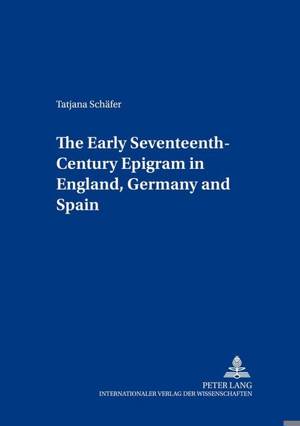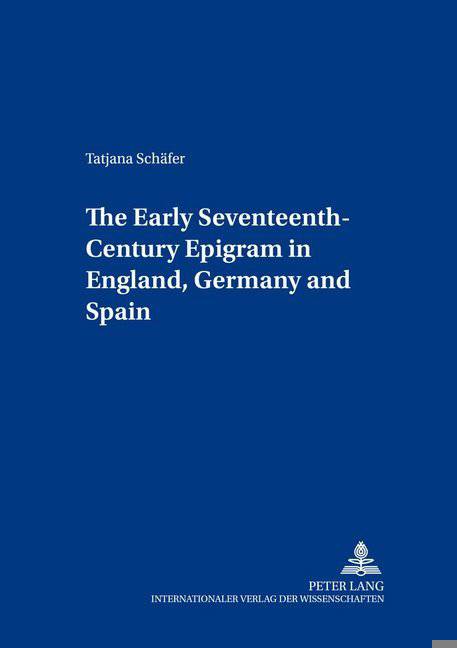
- Afhalen na 1 uur in een winkel met voorraad
- Gratis thuislevering in België vanaf € 30
- Ruim aanbod met 7 miljoen producten
- Afhalen na 1 uur in een winkel met voorraad
- Gratis thuislevering in België vanaf € 30
- Ruim aanbod met 7 miljoen producten
Zoeken
The Early Seventeenth-Century Epigram in England, Germany, and Spain
A Comparative Study
Tatjana Schäfer
€ 57,95
+ 115 punten
Omschrijving
This book is primarily a comparative study of three early seventeenth-century epigrammatists, Friedrich von Logau in Germany, Robert Herrick in England, and Conde de Villamediana in Spain. The first part of the study looks at the origins of the epigram in ancient tradition and shows how the early modern poets use the ancient models. The second part explores each poet in his own cultural and literary context. Friedrich von Logau is shown against the backdrop of the German Sprachgesellschaften, Conde de Villamediana's epigrams mirror his flamboyant lifestyle, and Robert Herrick uses the genre as part of his exploration of literary forms. This literary study thus expands into a cultural one of the three countries through their poets.
Specificaties
Betrokkenen
- Auteur(s):
- Uitgeverij:
Inhoud
- Aantal bladzijden:
- 244
- Taal:
- Engels
- Reeks:
- Reeksnummer:
- nr. 8
Eigenschappen
- Productcode (EAN):
- 9783631510261
- Verschijningsdatum:
- 2/08/2004
- Uitvoering:
- Paperback
- Formaat:
- Trade paperback (VS)
- Afmetingen:
- 148 mm x 210 mm
- Gewicht:
- 349 g

Alleen bij Standaard Boekhandel
+ 115 punten op je klantenkaart van Standaard Boekhandel
Beoordelingen
We publiceren alleen reviews die voldoen aan de voorwaarden voor reviews. Bekijk onze voorwaarden voor reviews.











